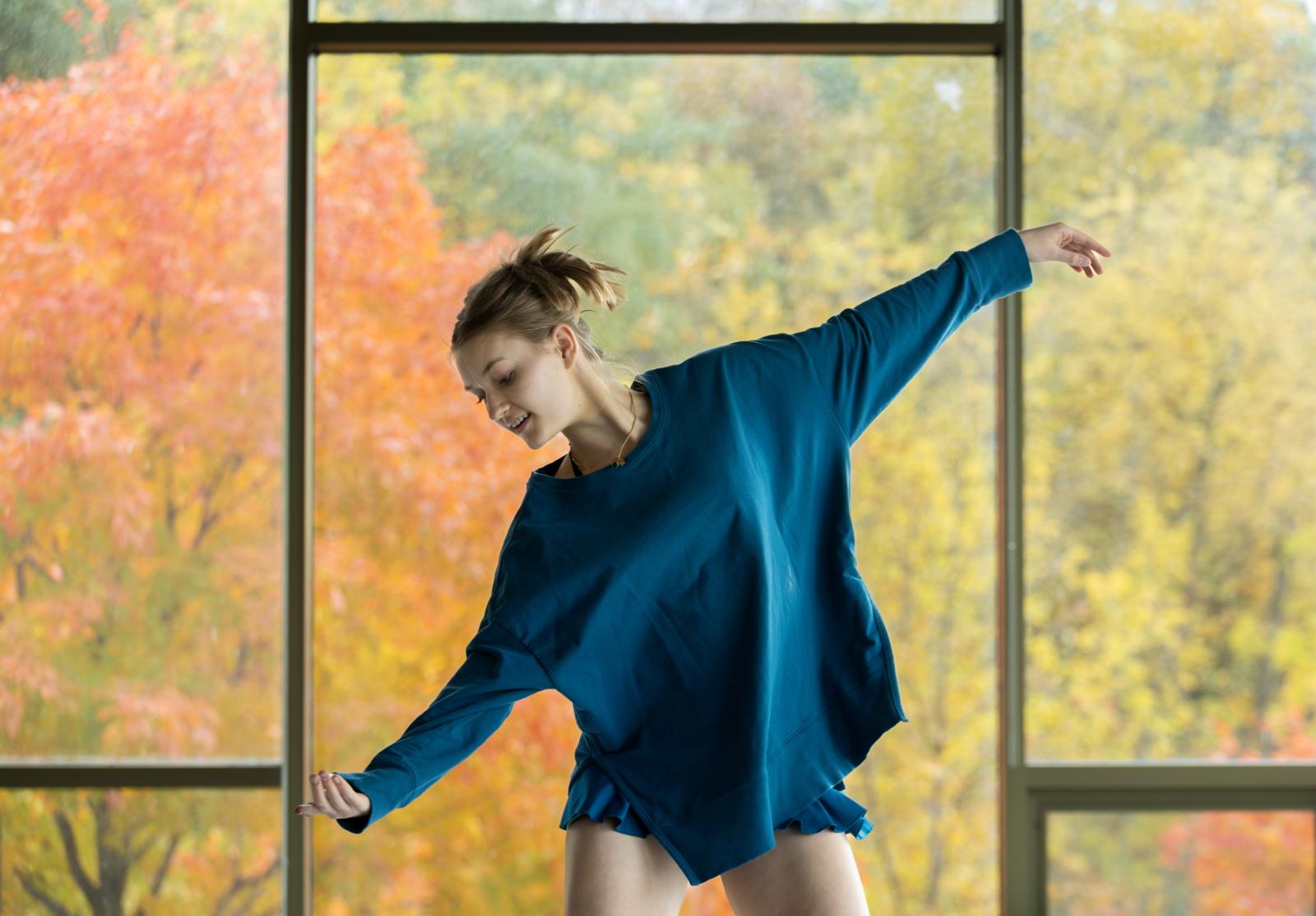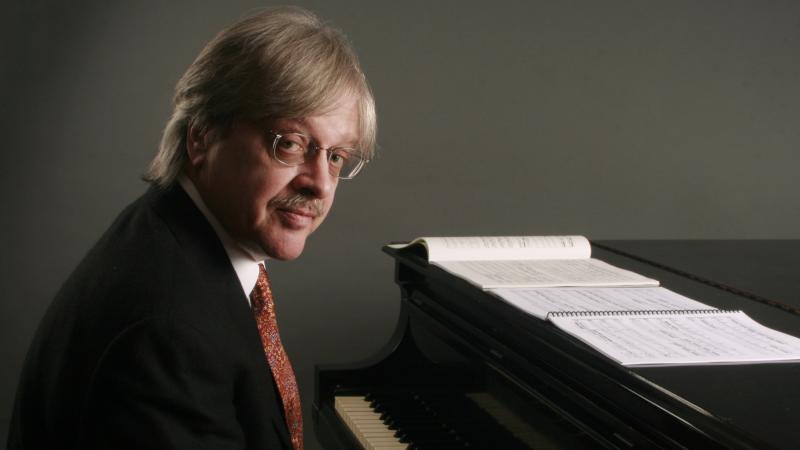A new dance minor has been introduced at Lawrence University, the culmination of years of effort to build a comprehensive dance program.
In full, Dance: Embodied Collaborative Practice minor and interdisciplinary area is a lofty name.
“All of the words are important,” said Mauriah Donegan Kraker, visiting assistant professor of dance. “The minor values every body, practice as research, and kinetic intelligence. Collaborative practice is the foundation of our study. Each dance class, rehearsal space, or performance at Lawrence supports the individual with tools for strengthening their own artistic voice and deepening their collaborative skills.”

Tori Schneider (left) and Madeleine Tevonian take part in a Dance Collective Ensemble class.
Margaret S. Paek, also a visiting assistant professor of dance, said the goal is not to teach mimicry but to discover an individualized understanding of one’s body.
“Embodiment denotes a relationship to the senses and experiences, rather than the look of a move or any (jazz hands) presentation,” she said.
The title’s emphasis on collaboration reflects a hallmark of dance at Lawrence. Kraker and Paek said they resist an authoritarian, hierarchical classroom structure, and instead embrace critical pedagogy and hope to collaborate with students.
“The goal for me is to support their dance inquiries and for students to grow into artistic peers to be creating within the room,” Paek said. “… We can’t collaborate unless we all have agency.”
Dance at Lawrence values every body, practice as research, and kinetic intelligence. Collaborative practice will be the foundation of your study.
The idea of practice is equally central in the degree’s scope. There is no endpoint for dance at Lawrence—the faculty view it as a continuous journey.
Dance programs did not always exist at Lawrence. Paek was recruited by Brian Pertl, dean of the Conservatory of Music, in 2015. Since then, Paek and Kraker—hired in 2021 through the theater program—have gradually built the department.
“For me, music and dance are all part of the same expressive/creative continuum,” Pertl said. “I want all our Lawrence musicians, and really all our Lawrence students, to have the opportunity to explore their creative birthright through embodied practice. For our musicians, dance deepens expressive musicality. It deepens creativity and provides yet another artistic path to experience the magic and joy of artmaking. The dance minor is a beautiful leap forward for all Lawrentians.”
The dance minor incorporates classes that have already been developed.
“That has been done informally, structurally through our years together,” Kraker said.
Tori Schneider, a senior art history major from Eden Prairie, Minnesota, is among the first students to pursue the dance minor. She said she’s thrilled to see the growth in dance at Lawrence. When she first took Contact Improvisation, she was in a class of 15 students. A year later—she was working as the course’s teaching assistant—there were more than 30 signups.
“Dance has exploded here,” Schneider said.
That’s part of the momentum that’s building, Paek said. Establishing the dance minor is the next step, providing increased visibility for the program. Students who have been committed to dance now have a more tangible path. Among those students is Schneider, who has been taking dance classes since her first year on campus.
“I think that the ability to actually achieve a minor really gives the students who put a lot of effort into dance … something to show for it,” she said.

Ella Rose Schaefer participates in a dance rehearsal in Warch Campus Center.
Schneider finds strong connections between her art history major and her dance minor. The topics often collide in performance art, which Schneider plans to center her senior capstone on.
“[Although] they may seem very different on the surface level … dance is a form of art,” she said.
Paek elaborated: “The way that we think about dance is dance through a lens that you can engage with anything. So, in one aspect, you can bring whatever you’re majoring in and whatever your interests are and use it as a lens to research.”
The interdisciplinary nature of the minor allows for course connections all around the university. Students seeking the dance minor will take classes related to kinesiology, musicology, musical performance, stagecraft, and theater.
Kraker cautions not to consider dance “supplemental”: “Our lineage [of dance here]”, she said, “is an organization of movement, in solo and ensemble ways.”
Students have a long history of organized dance groups, including a competitive team, swing club, and studio. In addition, guest dance artists visit Lawrence every term, often working directly with students.
“We’re teaching tactics that are about how you are stepping into the next site of performance,” Kraker said.
That could mean preparing for an interview, or how to gracefully navigate holding power in a room, or “how your body is in relationship to a community,” she said.
The minor aims to foster individualized and liberating dance experiences. Awareness and reflection are placed above perfection and competition.
“The environment is just really warm,” Schneider said. “They’re encouraging people—no judgment at all.”



